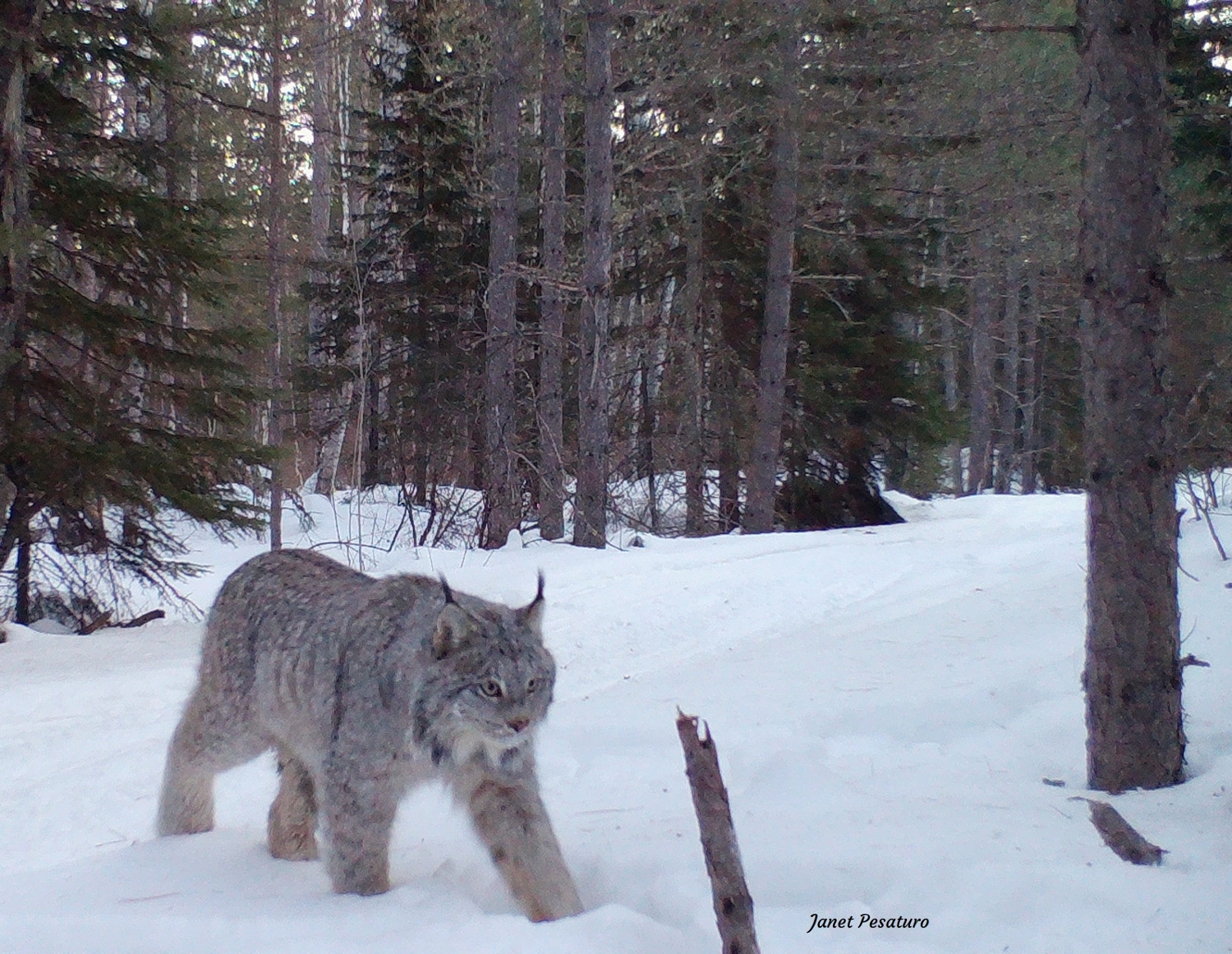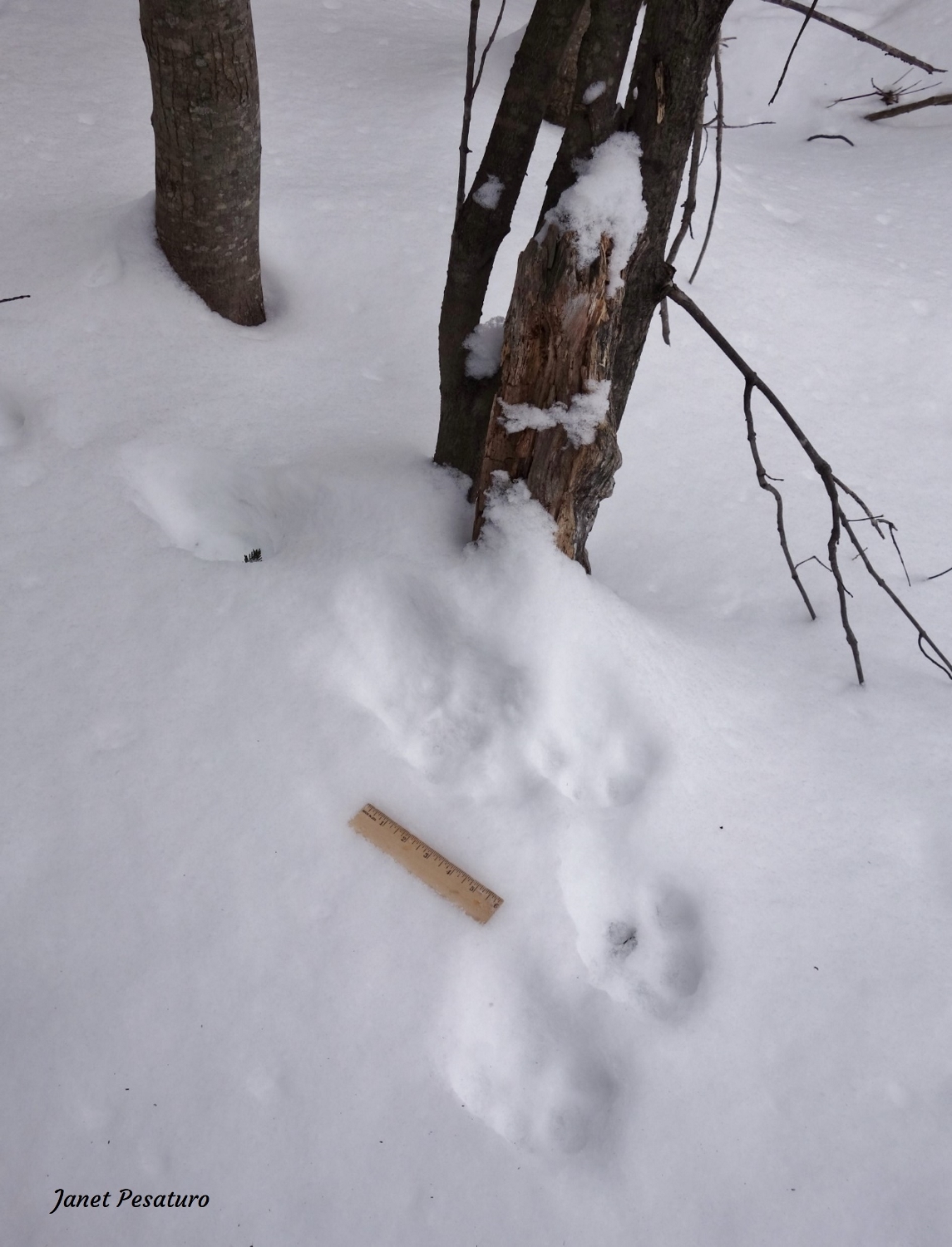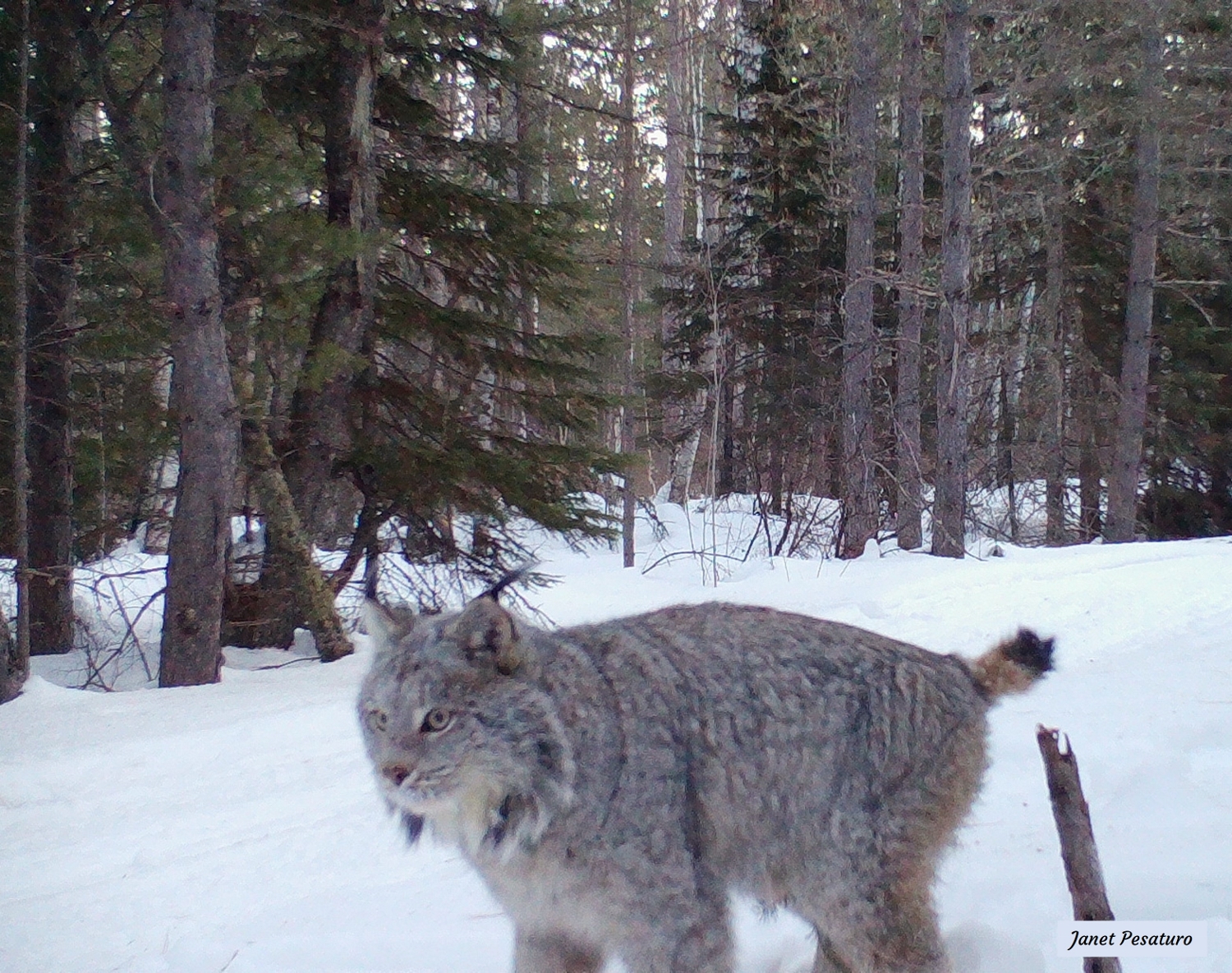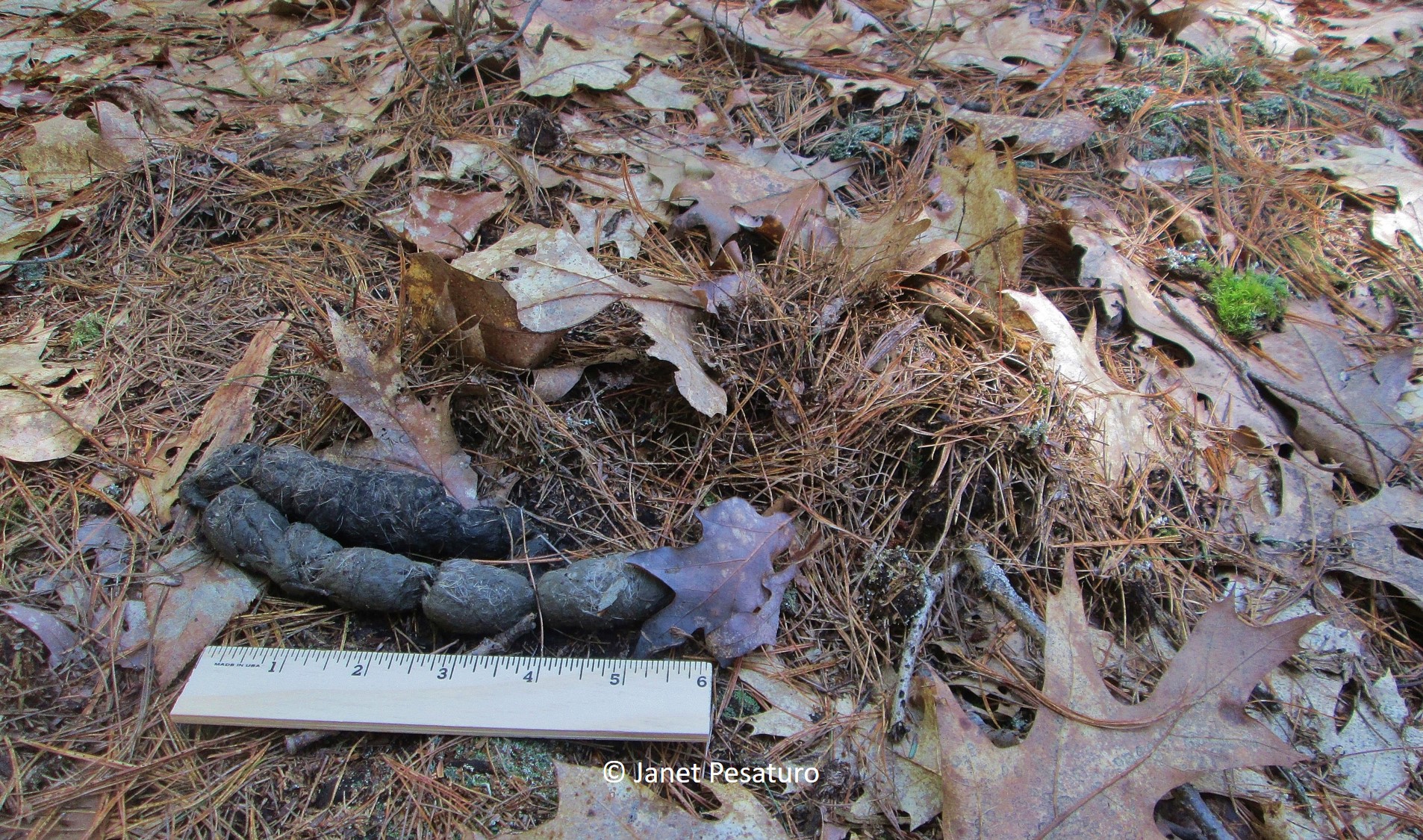Canada Lynx Scent Marking

Like its close cousin the bobcat, the Canada lynx (Lynx canadensis) is well known to mark with urine by spraying backwards onto vertical surfaces and by rubbing its head onto objects. However, until camera trapper David Troup captured it on video, the lynx was not known to create scrapes, a well documented behavior in bobcats. David has generously allowed me to use his footage of a lynx scraping (and head rubbing), so in this post you will see all examples of all three types of Canada lynx scent marking. Both lynx and bobcats make use of a 4th type of scent marking, scratching trees and logs in the same way that house cats scratch furniture and rugs, but I do not have any video footage of that.
Three Types of Canada Lynx Scent Marking
1. Urine Spraying
Lynx and bobcats spray urine backwards onto vertical surfaces such as stumps, trees, and rocks. Trackers sometimes say that cats prefer to spray spongy, rotting stumps, presumably because the absorbent wood holds the odor for longer. Now that I’ve seen many trail camera videos of cats (especially bobcats) spraying, I don’t know if there is truly such a preference. Camera traps frequently capture them spraying rocks, trees, and even healthy saplings. I’m not so sure that decaying stumps are over-represented. In my mind it remains an open question.
Below is one example of tracks left by a lynx who clearly paused at a stump, so I gave it the sniff test and confirmed cat urine. The tracks revealed that the cat had been direct registering before reaching the stump, and then resumed direct registering after spraying. Therefore the 4 tracks near the stump were a clear break in gait.


Next is a video of a lynx spraying a stump on which I confirmed the odor of cat urine while tracking a lynx. If you watch the slow motion clip carefully, you can see that this cat also broke from direct registering when it paused to spray.
Lynx, like bobcats, do sometimes return to their scent posts to “freshen” them, so finding one is a great way to camera trap the animal. However, both species seem to spray so frequently that you might capture the behavior incidentally whenever you capture the animal. Such was the case with the following video. I had not identified the spray station at that spot, but at about 58 seconds into the video, the cat pauses ever so briefly to spray a rock. Watch carefully.
2. Scraping
Bobcats, mountain lions, and some other cat species are well known to create “scrapes”. The animal scrapes the ground with its hind feet, often creating a small mound of substrate (snow, leaf litter or other debris) beyond the scrape marks. It probably leaves scent from its feet that can be interpreted by other individuals. Sometimes the cat also deposits urine, scat or both onto the mound, leaving additional olfactory information, and sometimes it merely scrapes.
But to my knowledge, lynx had not been documented creating scrapes, prior to David Troup’s footage below. In a 1993 study of captive individuals of 20 species of small cat, Mellen observed no scraping behavior among lynx. Similarly, Elbroch and McFarland (2019) stated that they were not aware of any instances of lynx scraping. Nor is there any mention of lynx scraping in Feldhammer’s tome on North American Mammals (2nd edition, 2003).

Interestingly, David Troup has captured this behavior several times with his cameras in Yukon Territory, so I suspect this behavior is not rare in lynx. The fact that it has been documented countless times in bobcats and mountain lions but not in lynx may simply reflect sampling effort. As a species of the far North, lynx are camera trapped much less frequently. For example, in my Facebook group Trail Camera Photos and Videos which currently has over 8,500 members, many people regularly post videos of bobcats, some post regularly of mountain lions, but only two people post lynx videos regularly. There just aren’t as many people camera trapping in lynx territory as there are in bobcat and mountain lion country
3. Head Rubbing
Many cat species also rub their heads, cheeks, and necks on objects and in this way probably leave olfactory information that can be interpreted by other animals. Anyone who has had the honor of living with domestic cats well knows their fondness for rubbing people’s legs and hands. The final clip in David’s video above shows a dramatic example of a lynx engaged in this behavior.
Sources
Elbroch, M. and C. McFarland. Mammal Tracks & Sign: A Guide to North American Species. Guilford, CT: Stackpole Books, 2019.
Feldhammer, G. A., B. C. Thompson and J. A. Chapman, eds. Wild Mammals of North America: Biology, Management, and Conservation. 2nd ed. Baltimore and London: The Johns Hopkins University Press, 2003.
Mellen, J. D. “A Comparative Analysis of Scent-Marking, Social and Reproductive Behavior in 20 Species of Small Cats (Felis).” Amer. Zool. 33 (1993): 151-166.
Yukon Wildlife Cams (David Troup’s Facebook page)

Great footage and write-up Janet!
Thanks, Jim! David’s footage really made the post. How amazing that lynx were scraping unbeknownst to humans until he captured that behavior.
This is such a great news letter!
Thanks! I am glad you find it useful.
I inevitably learn something from your posts, Janet. Thanks for your attention and interest in wildlife – always makes my day.
I’m so glad to know that – thanks for commenting!